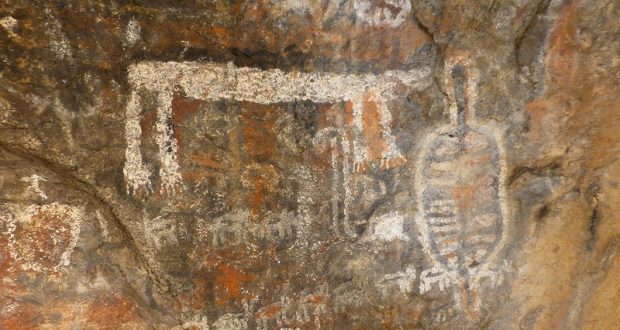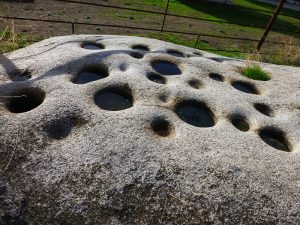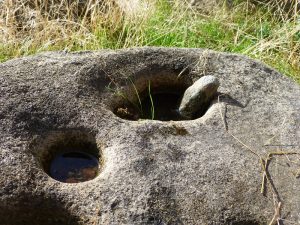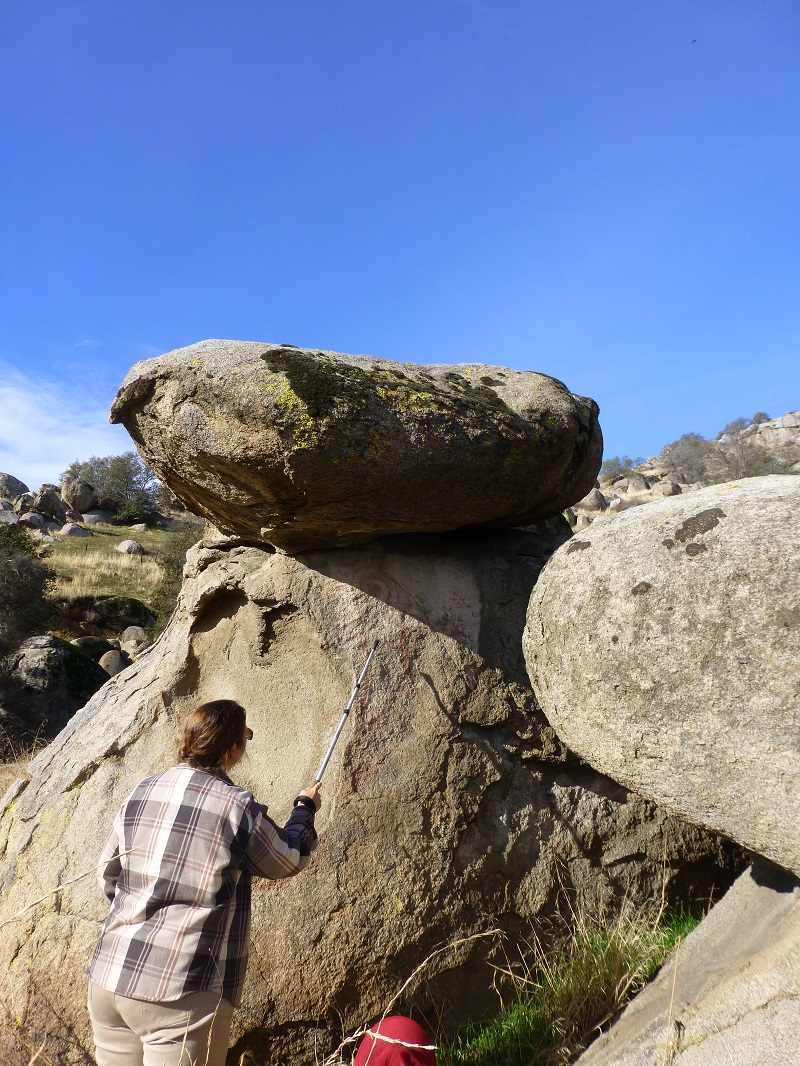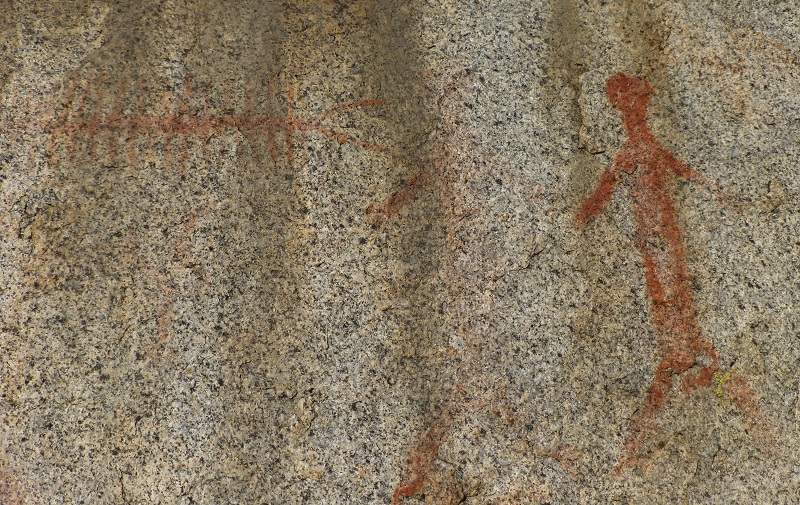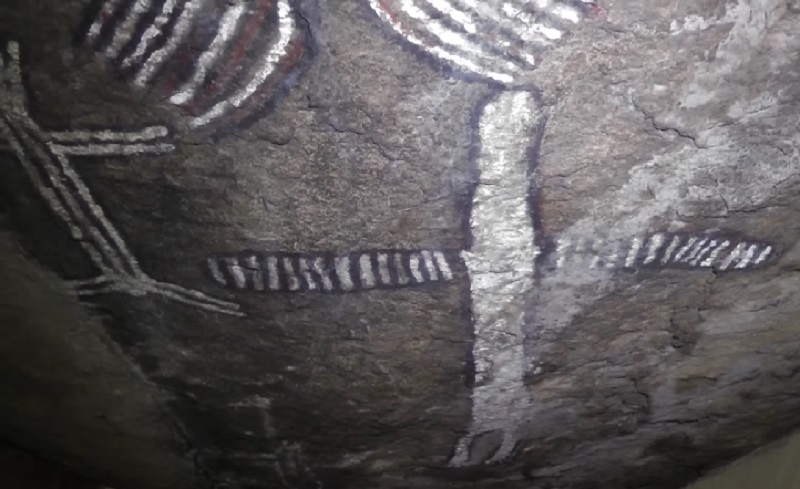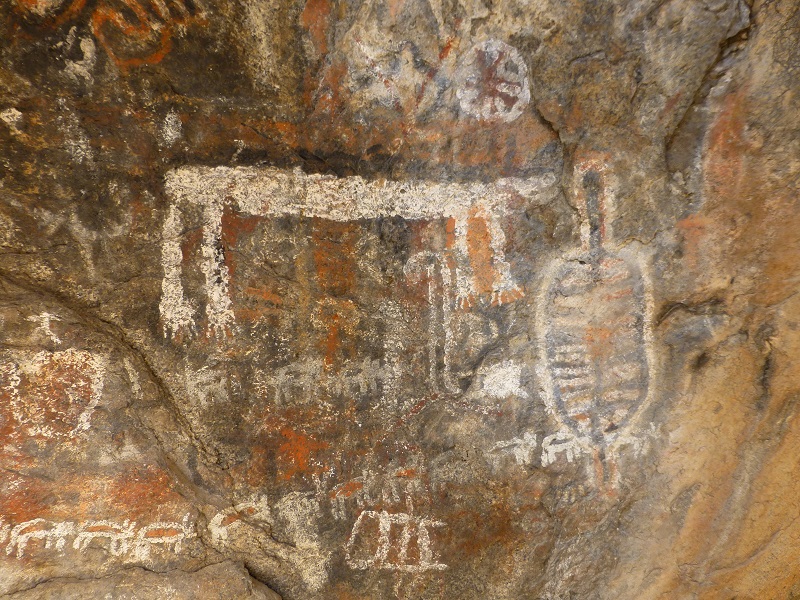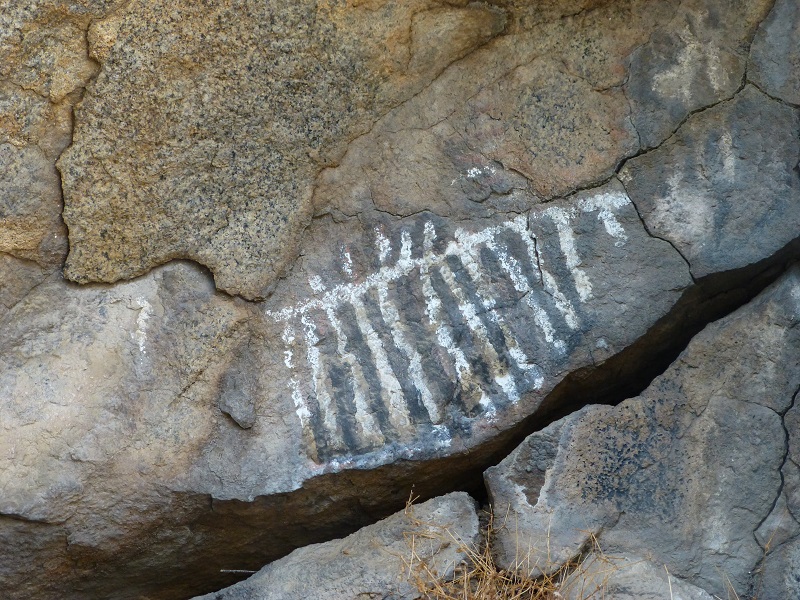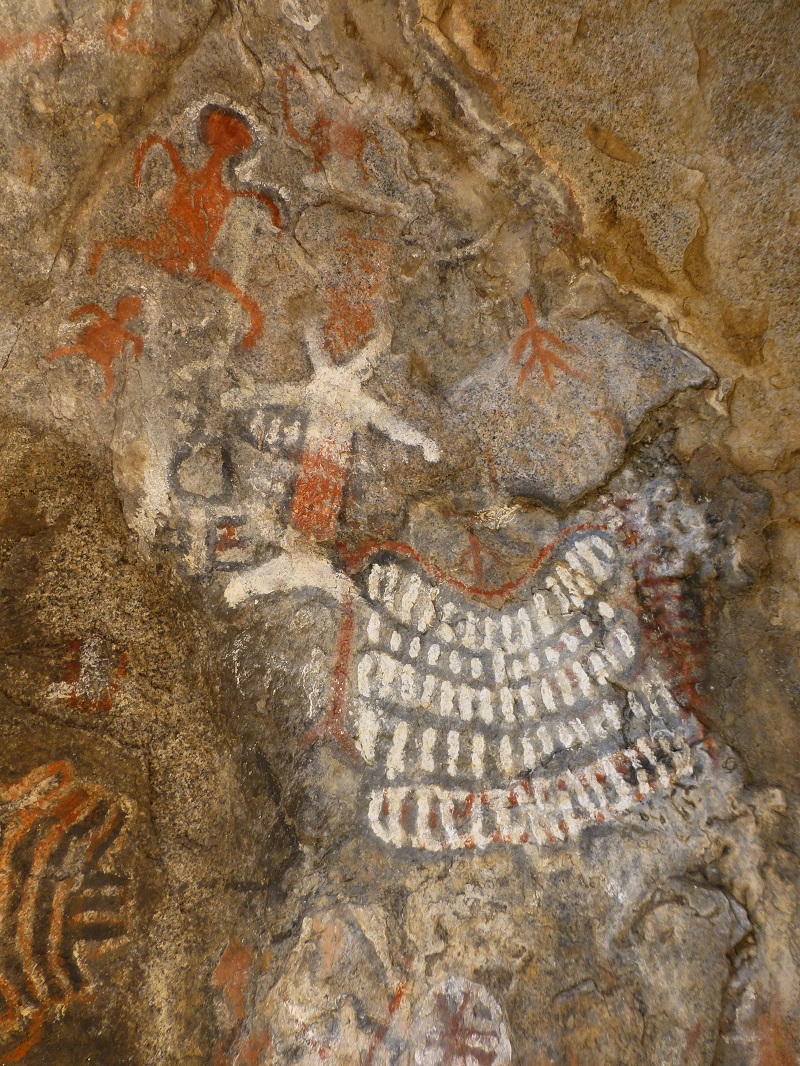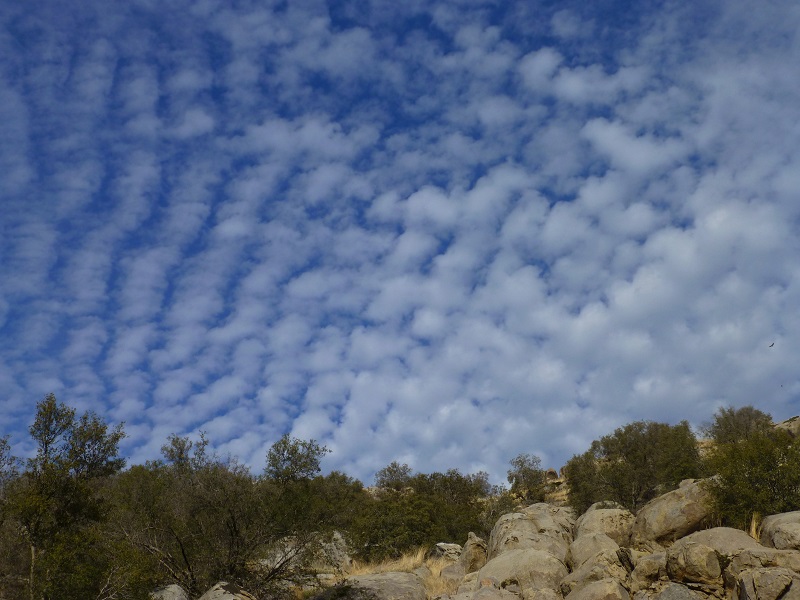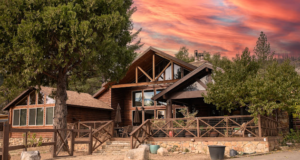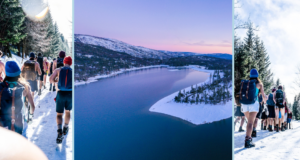I hiked to a sacred place to Native Americans in the area where many of their pictographs survive today, helping to tell us about their lives and beliefs.
Every once in a while, I receive a question about where a person can find a group to go hiking with and one of my suggestions is the Central Valley Hiking Group. They have a varied hiking schedule that you can participate in and the first step is to sign up with them (link at end of blog). They announced a hike that sounded very interesting to me, limited to 15 hikers and led by the Archaeological Conservancy that would visit Native American Pictographs in Tulare County so I signed up. This area is NOT open to the general public and the only way that you can tour it is with a representative of the Conservancy. Also, no dogs are allowed just in case you were wondering.
The Archaeological Conservancy is the only national, nonprofit organization that identifies, acquires, and preserves the most significant archaeological sites in the United States. Since its beginning in 1980, the Conservancy has now preserved 500 sites across the nation, ranging in age from the earliest habitation sites in North America to a 19th century frontier army post. I have written more about them at the end of this blog, along with a link to their Home Page. This site is a partnership with the Nature Conservancy.
As we gathered at the site and I could see several grinding holes nearby. For the Yokuts of this area, the Rocky Hill Archaeological Preserve is not an archaeological site, or a prehistoric site. It is a living historical and sacred site that is still in use. This was the site of a village and gathering place.
Our tour was led by Bill and Laura Manser, members of the Southern Sierra Archaeological Society, and they began by lighting sage that they brought, offering us to partake if we wish to purify ourselves before we visited this sacred site. We learned a tradition of the Native Americans was to bring a gift when they visited a neighboring tribal groups. Bill and Laura had brought tobacco as an offering to the Elders and Grandfather and we presented this offering at the Welcoming Rock.
Before the white man settled in the San Joaquin Valley, the entire valley floor was home to the Native American people known as the Yokuts Indian Nation. The word Yokuts means “Person” or “People”. They numbered about 25,000 and were clustered into nearly fifty independent local sub-tribes. Approximately twenty-two villages stretched from Stockton in the north to Tejon Canyon in the Tehachapi mountains to the south. The largest concentration of Yokuts were found in eight villages located around Tulare Lake and the Kaweah River and its tributaries. The next largest group was the neighboring Chumash to the south.
The Yokuts visited back and forth among their villages although each tribe definitely held its own territory. Each tribe spoke its own slightly different dialect but there was at least a partial ability to communicate throughout the widespread territory. The customs and institutions of the many tribes were also basically the same.
Except in the Tulare Lake area, Yokuts villages were of a permanent nature. Around Tulare Lake, however, because of the constantly shifting shoreline and the fierce winds, the Yokuts built huts of a temporary nature. The Yokuts living around Tulare Lake were more migratory than other sub-tribes, and their houses were mostly communal. Wedge-shaped tents up to 300 feet long housed a dozen or more families, and the tents could be quickly raised, moved or replaced.
The Yokuts were great hunters and fishermen. Acorns were a principal food that were made into flat cakes or mush. Besides acorns, they ate fish, game birds, elk, deer, antelope, grasses, nuts, berries and seeds of all kinds. They dried meat like jerky and caught clams and mussels in Tulare Lake. Salt was a principal seasoning and came from salt grass which grew in swampy areas and was threshed from the grass as it dried. They are also known for the beautiful baskets which they created.
The Yokut nation was actually made up of about forty tribes, all speaking dialects of the Penutian language family. The Penutians were widely scattered in western North America and included the Haida and Tsimshian of British Columbia and various tribes in Washington, Oregon, and northern California, as well as tribes in southern Mexico and Central America. The Yokuts’ way of life continued in some areas until late in the 19th century. The Spanish did not disturb the Yokuts and disruptive contact between the Anglos and the Yokuts did not begin until after I850s. They shared a border to the south with the Chumash, who the local Yohut carried on an active trade, exchanging materials and ideas on the Carrizo Plains near their mutual boundary lines.
The paintings located at Rocky Hill are pictographs. They differ from petroglyphs that are created by removing part of a rock’s surface by incising, picking, or carving to create the rock art. The pictographs are created with natural pigments to create the colors.
Some of these pictographs are very old, dating back over 1,000 years and we learned that much is unknown about the meanings behind all of the pictographs. Even without understand the importance of these beautiful paintings, it is very easy to appreciate their beauty and power. Many of the images of people had a split head.
Many of the pictographs were of animals such bear, sheep, snakes and condors.
Some had no clear meaning to me but I am sure they did to the people who created them.
And some were very powerful and appeared to represent important events or ceremonies.
After being in the special places that the Yokut left their presence on, I looked up at the sky, watching the hawks soaring, and I could feel something here at this site that remains of their spirit.
You may be inspired to go hiking with the Central Valley Hiking Group. This is really large group, almost 3,000 members, and they have lots and lots of hikes. There are no membership fees and they rely on donations to help support it. To sign up and view their hikes, go to Central Valley Hiking Group
You can also locate many other Meetup Groups off of Meetup.com for all kinds of interests and names such as “Mindfulness, Wellness and Mother Nature”, “Drinking with Strangers-Fresno”, “Oakhurst Anything Fun Social Meetup”, “Friendship and Fun for Fifty+”, “YLP Hiking Friends” and many more.
You may now have an interest to learn more about Archaeological sites near you and I have included some local links at the end. If you are interested in touring the Rocky Hill Yokut site, whether with a group or to tag along with a future trip, you can contact Laura at Ldriggs5@gmail.com for more information.
Links:
A Visit to Rocky Hill Archaeological Preserve Exeter, California
An Introduction to Yukuts Rock Painting
Yokuts Sacred Place YouTube Video
Society for California Archaeology
Tulare County Archaeological Society
Southern Sierra Archaeological Society, P.O. Box 1793, Visalia, CA 93279
The Yokuts – By Ellen Gorelick, Executive Director-Chief Curator Tulare Historical Museum
Fresno County Archaeological Society
Fresno County Archaeological Society Facebook Page
Madera County Archaeological Society
Mariposa County Archaeological Society

